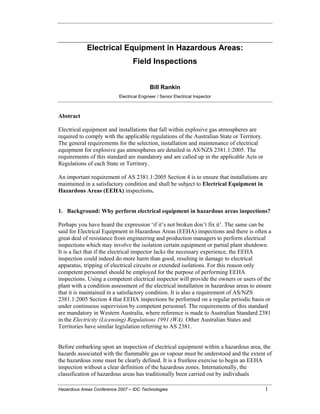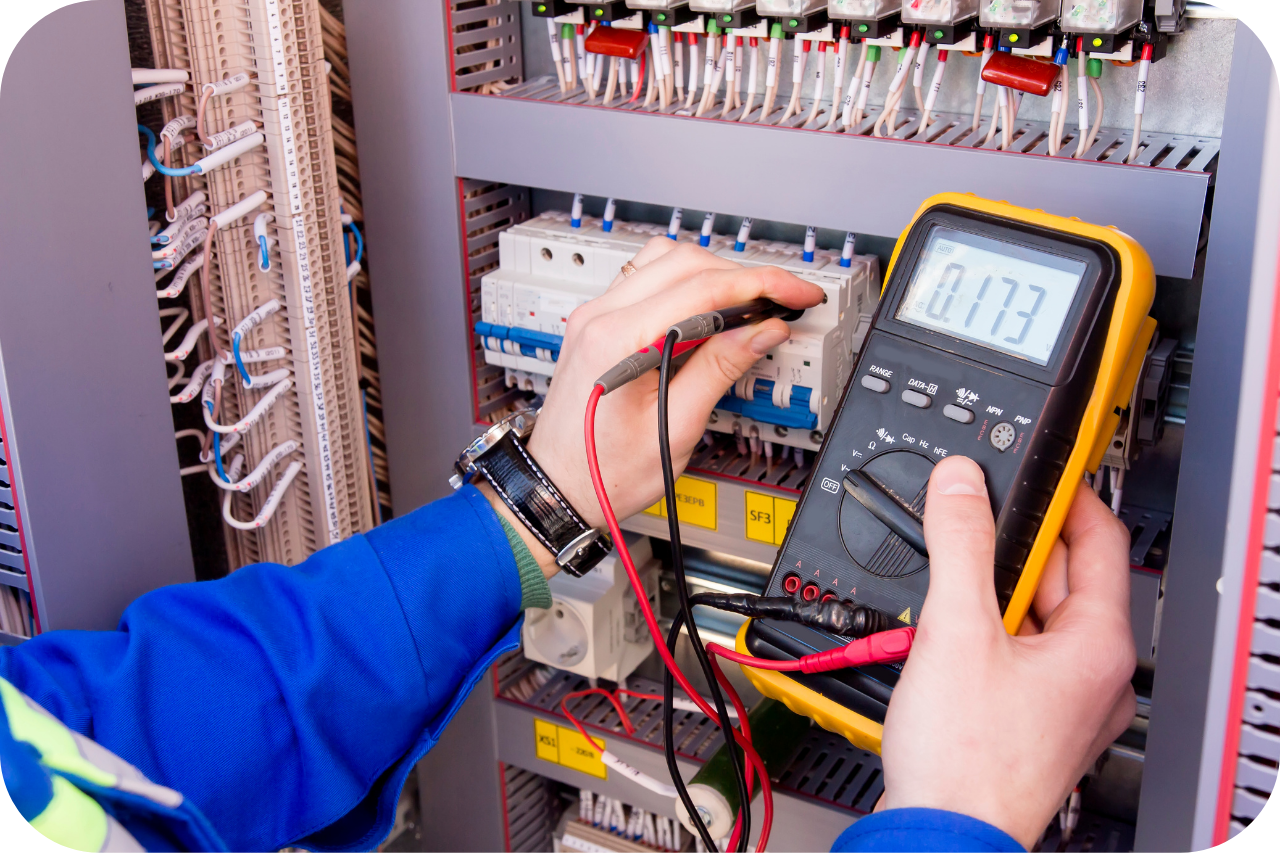The Basic Principles Of Roar Solutions
The Basic Principles Of Roar Solutions
Blog Article
Roar Solutions - Questions
Table of ContentsOur Roar Solutions DiariesWhat Does Roar Solutions Do?Roar Solutions Fundamentals Explained
In order to protect setups from a potential surge an approach of evaluating and classifying a possibly dangerous location is needed. The purpose of this is to make certain the right selection and installment of devices to inevitably prevent a surge and to ensure security of life.
(https://www.indiegogo.com/individuals/38463782)
No equipment ought to be mounted where the surface temperature of the equipment is higher than the ignition temperature of the offered threat. Below are some typical dirt unsafe and their minimal ignition temperature level. Coal Dirt 380C 225C Polythene 420C (thaws) Methyl Cellulose 420C 320C Starch 460C 435C Flour 490C 340C Sugar 490C 460C Grain Dirt 510C 300C Phenolic Material 530C > 450C Aluminium 590C > 450C PVC 700C > 450C Soot 810C 570C The possibility of the hazard existing in a focus high sufficient to trigger an ignition will vary from place to place.
Unsafe location electric devices perhaps developed for use in higher ambient temperatures. Field Repair By Authorised Employee: Difficult screening might not be required however specific treatments might need to be followed in order for the tools to keep its third event ranking. Each item of equipment with a dangerous score must be assessed independently.
Some Known Details About Roar Solutions
The devices register is an extensive data source of equipment documents that includes a minimum collection of areas to determine each item's place, technological parameters, Ex lover category, age, and environmental information. This information is vital for tracking and taking care of the equipment effectively within harmful locations. On the other hand, for routine or RBI sampling examinations, the grade will be a mix of Comprehensive and Close examinations. The proportion of Detailed to Close inspections will be determined by the Equipment Danger, which is analyzed based on ignition threat (the possibility of a resource of ignition versus the chance of a combustible atmosphere )and the harmful location category
( Area 0, 1, or 2). This variation will certainly additionally affect the resourcing requirements for work prep work. As soon as Whole lots are defined, you can establish sampling strategies based on the sample size of each Lot, which refers to the variety of random tools things to be examined. To determine the needed example dimension, 2 aspects need to be reviewed: the dimension of the Great deal and the group of evaluation, which shows the degree of initiative that need to be used( decreased, typical, or boosted )to the assessment of the Great deal. By incorporating the classification of assessment with the Whole lot dimension, you can after that develop the proper denial criteria for a sample, suggesting the allowed variety of damaged things located within that example. For even more details on this procedure, please describe the Energy Institute Guidelines. The IEC 60079 common suggests that the maximum period in between evaluations should not go beyond 3 years. EEHA assessments will additionally be performed outside of RBI projects as part of set up upkeep and equipment overhauls or repair work. These evaluations can be credited towards the RBI example dimensions within the affected Whole lots. EEHA evaluations are conducted to recognize faults in electric equipment. A heavy racking up system is important, as a solitary tool may have numerous faults, each with differing levels of ignition threat. If the consolidated score of both inspections is less than twice the fault rating, the Great deal is considered appropriate. If the Great deal is still taken into consideration undesirable, it needs to undertake a full evaluation or validation, which may cause stricter examination protocols. Accepted Great deal: The sources of any type of mistakes are recognized. If a typical failing mode is discovered, additional equipment may require maintenance. Faults are classified by extent( Safety, Stability, Home cleaning ), making sure that urgent problems are assessed and dealt with without delay to reduce any type of effect on safety and security or operations. The EEHA database must track and tape the lifecycle of mistakes along with the corrective actions taken. Carrying out a robust Risk-Based Evaluation( RBI )technique is crucial for making sure conformity and safety and security in managing Electrical Equipment in Hazardous Locations( EEHA) (eeha courses). Automated Fault Scoring and Lifecycle Management: Effortlessly handle faults and track their link lifecycle to improve inspection accuracy. The introduction of this assistance for risk-based examination even more reinforces Inspectivity's placement as a best-in-class remedy for governing conformity, along with for any type of asset-centric assessment usage situation. If you want discovering more, we invite you to request a demo and discover just how our option can change your EEHA administration processes.
The 30-Second Trick For Roar Solutions

In regards to eruptive threat, a hazardous location is a setting in which an eruptive atmosphere exists (or may be anticipated to be present) in amounts that need unique preventative measures for the building, installation and use equipment. electrical refresher course. In this short article we explore the obstacles dealt with in the workplace, the danger control steps, and the called for proficiencies to work safely
These substances can, in certain problems, form explosive ambiences and these can have significant and unfortunate repercussions. Many of us are acquainted with the fire triangular eliminate any kind of one of the 3 components and the fire can not happen, yet what does this mean in the context of hazardous locations?
In most instances, we can do little regarding the degrees of oxygen in the air, however we can have substantial impact on resources of ignition, for instance electrical equipment. Hazardous locations are recorded on the unsafe location classification drawing and are recognized on-site by the triangular "EX-SPOUSE" indication. Right here, amongst other key details, areas are divided into three kinds relying on the hazard, the possibility and duration that an eruptive environment will certainly exist; Zone 0 or 20 is deemed one of the most dangerous and Zone 2 or 22 is regarded the least.
Report this page